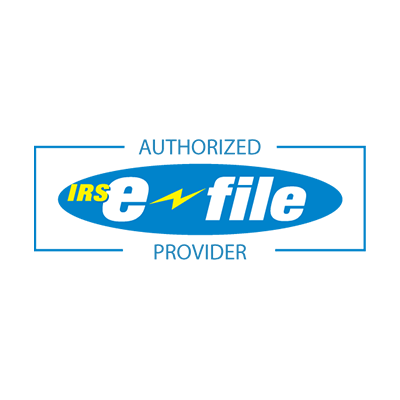Whether you are an independent owner-operator or manage a trucking company with a large fleet, you have a variety of difficult decisions to make, including whether to purchase a new or used semi truck. Buying a used semi truck could be a good financial decision that yields a vehicle in great condition at a fraction of the cost of buying new, but this significant decision requires balancing cost savings against potential risks and rewards.
Careful consideration and thorough research are key to making an informed choice. To that end, we’ve put together our own buying a used semi truck checklist you can follow on your purchasing journey.
Evaluating Truck Condition and Maintenance
Evaluating the overall condition of the truck is at the top of the buying a used semi truck checklist for a good reason. The last thing you want is to end up with a “lemon” that necessitates additional repairs that could keep you off the road for weeks on end, preventing you from seizing opportunities to haul loads and make a profit!
When considering a used semi truck, the condition of its engine, body, and interior, indicates how well it has been maintained. Inspect the engine for signs of wear or serious damage, such as unusual noises, oil leaks, or smoke during startup. Examine the body for rust, damage, or repairs, paying special attention to frame damage or structural issues. Assess the condition of seats, the dashboard, and the electrical systems. Evaluate the suspension, tires, and brakes for signs of wear or needed replacement. Review the truck’s service history, checking for consistent maintenance records and major repairs. If you’re unsure or want additional help, consider hiring an independent inspector or a mechanic you trust.
Analyzing Truck Specifications for Suitability
Next on the buying a used semi truck checklist lies suitability – is the truck a good fit for you? It’s essential to match the truck’s specifications with your specific business needs. Evaluate the truck’s load capacity and fuel efficiency to ensure it aligns with your hauling requirements and long-term operating costs. Consider the size and power for the intended hauling tasks, accounting for factors like payload capacity and terrain. Review any specialized features or modifications, such as additional axles for increased weight capacity or aerodynamic enhancements for fuel efficiency. Remember: in many cases the number of axles impacts rates on toll roads.
Choosing a Reputable Dealer
The quality of goods received or services rendered is, in large part, linked directly to the character and standing of the seller, which is why choosing a reputable dealer makes the cut for your buying a used semi truck checklist. Researching the dealer’s history and customer reviews is essential for assessing their transparency, honesty, and fair business practices. Investigate the dealer’s reputation for providing accurate vehicle histories and conducting thorough inspections. Assess the dealer’s warranty offerings and any additional services they provide, such as financing or trade-in options. Inquire about the specifics of their warranty programs, including what components are covered. Evaluate the benefits of any additional services like after-sales support or maintenance packages.
Extended Warranties and Service Contracts
Understanding the coverage provided by extended warranties and service contracts is a crucial constituent of your buying a used semi truck checklist. This is especially important for major components like the engine, transmission, and differential. Comparing the cost of the warranty or service contract to potential repair expenses helps in determining its cost-effectiveness. Evaluate the financial implications of opting for a warranty versus paying for potential repairs out of pocket. Consider the frequency and cost of common repairs for the specific truck model you’re interested in.
Recognizing Warning Signs and Negotiating
Your buying a used semi truck checklist isn’t complete without this one. Being vigilant about potential issues is vital; investigate any lack of clear title or evidence of major accidents. Watch out for signs of significant mechanical issues or overpricing, such as abnormal engine noises, warning lights, or inflated asking prices. Pay particular attention to any discrepancies in the vehicle’s history report or inconsistencies during the inspection. Research the current market value of similar truck models to have a baseline for negotiations. Be prepared with points to discuss during negotiations, such as recent repairs or upgrades the truck might need.
After Your Purchase
Once your purchase is complete, there’s a few more necessities before your vehicle is “road-ready.” We’ll list a few of them here, but for a more comprehensive breakdown, see our previous article on the topic.
Registration
Your new semi truck must be registered through the UCR (Unified Carrier Registration), which is a federal requirement for commercial vehicles participating in interstate commerce.
Inspection
Prior to operation, commercial motor vehicles must be inspected by a qualified inspector that is certified in commercial vehicle inspection and maintenance.
Insurance
As with any vehicle, and perhaps more important with a semi truck used for hauling loads of goods, insurance is a requirement. Insurance is necessary, not only for legal compliance, but also for protecting your new investment from the unexpected.
2290 tax payment
The 2290 tax payment or Heavy Vehicle Use Tax (HVUT) is mandatory for vehicles with a gross weight of 55,000 lbs or more.
i2290 Can Take One Item Off Your Checklist
With this buying a used semi truck checklist, you should be well-equipped for making an informed decision when buying a used semi truck, which is crucial for your business success. With so many items on your checklist, it can seem overwhelming, but there is one thing we can help you with – filing the HVUT with a simple, streamlined e-filing process, so you can focus on your trucking business.
Create an account with i2290 today and answer a few questions about your vehicle and your business. Then for a nominal fee, we will make the calculations for you and generate your stamped Schedule 1 in a matter of minutes!
Special note: This article is for general purposes, and is not intended to provide, and should not be relied on for tax, legal, investment, or accounting advice. The best way to ensure you’re properly filing and paying appropriate taxes is by following IRS regulations and consulting with a tax professional.


